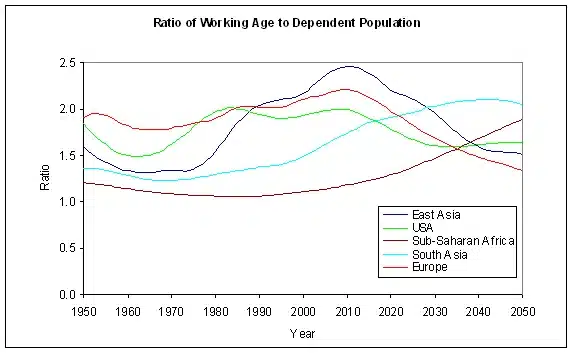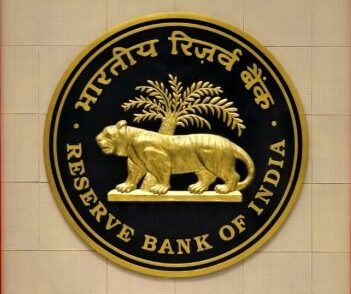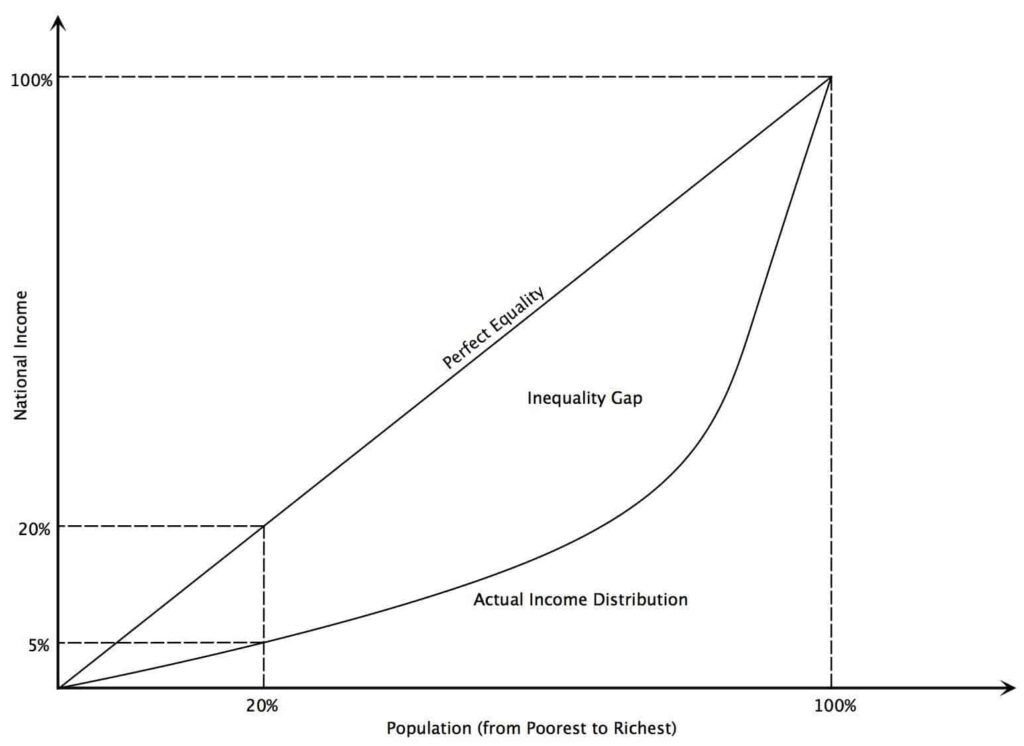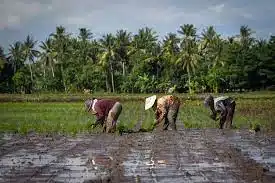Indian Financial Market
We know that, money always flows from surplus sector to deficit sector. That means persons having excess of money lend it to those who need money to fulfill their requirement.
Similarly, in business sectors the surplus money flows from the investors or lenders to the businessmen for the purpose of production or sale of goods and services. So, we find two different groups, one who invest money or lend money and the others, who borrow or use the money.
Now you think, how these two groups meet and transact with each other. The financial markets act as a link between these two different groups. It facilitates this function by acting as an intermediary between the borrowers and lenders of money. So, financial market may be defined as ‘a transmission mechanism between investors (or lenders) and the borrowers (or users) through which transfer of funds is facilitated’. It consists of individual investors, financial institutions and other intermediaries who are linked by a formal trading rules and communication network for trading the various financial assets and credit instruments.
The basis of transaction in financial market is either interest or dividend. This market might have its organised (institutionalised) as well as non-organised (unregulated/non-institutionalised) segments in an economy.
Financial markets in every economy are having two separate segments today, one catering to the requirements of short-term funds and the other to the requirements of long-term funds.
The short term financial market is known as the money market, while the long-term financial market is known as the capital market.
The money market fulfills the requirements of funds for the period upto 364 days (i.e. short term) while the capital market does the same for the period above 364 days (i.e. long term).
Indian Money Market: Financial Market
- The money market is a market for short-term funds, which deals in financial assets whose period of maturity is upto one year.
- It should be noted that money market does not deal in cash or money as such but simply provides a market for credit instruments such as bills of exchange, promissory notes, commercial paper, treasury bills, etc. These financial instruments are close substitute of money. These instruments help the business units, other organisations and the Government to borrow the funds to meet their short-term requirement.
- The ‘repo rate’ of the time (announced by the RBI) works as the guiding rate for the current ‘discount rate’.
- In the money market the financial assets, which have quick conversion quality into money and carry minimal transaction cost, are also traded.
- Money market does not imply to any specific market place. Rather it refers to the whole networks of financial institutions dealing in short-term funds, which provides an outlet to lenders and a source of supply for such funds to borrowers.
- Most of the money market transactions are taken place on telephone, fax or Internet.
- The Indian money market consists of Reserve Bank of India, Commercial banks, Co-operative banks, and other specialised financial institutions.
- The Reserve Bank of India is the leader of the money market in India.
- Some Non-Banking Financial Companies (NBFCs) and financial institutions like LIC, GIC, UTI, etc. also operate in the Indian money market.
Need for Money Market: Financial Market
- In the modern industrial economies creation of productive assets is not an easy task, as it requires investible capital of longterm nature.
- Long-term capital can be raised either through bank loans, corporate bonds, debentures or shares (i.e., from the capital market).
- But once a productive asset has been created and production starts there comes the need of another kind of capital, to meet the day-to-day shortfalls of working capital.
- It means that only setting-up of firms does not guarantee production as these firms keep facing fund mismatches in the day-to-day production process.
- Such funds are required only for a short period (days, fortnights or few months) and are needed to meet shortfalls in working capital requirements.
- This requires creation of a different segment of the financial market which can cater to the short-term requirements of such funds for the eneterprises—known as the money market or the working capital market.
- The short-term period is defined as upto 364 days.
Money Market in India: Financial Market
- The organized form of money market in India is just close to three decades old. However, its presence has been there, but restricted to the government only.
- It was the Chakravarthy Committee (1985) which, for the first time, underlined the need of an organized money market in the country and the Vahul Committee (1987) laid the blue print for its development.
- Today, money market in India is not an integrated unit and has two segments— Unorganized Money Market and Organized Money Market.
Unorganized Money Market: Financial Market
Before the government started the organized development of the money market in India, its unorganized form had its presence since the ancient times—its remnant is still present in the country. Their activities are not regulated like the organized money market, but they are recognized by the government. In recent years, some of them have been included under the regulated organized market (for example, the NBFCs were put under the regulatory control of the RBI in 1997). The unorganized money market in India may be divided into three differing categories:
- Unregulated Non-Bank Financial Intermediaries: Unregulated Non-Banking Financial Intermediaries are functioning in the form of chit funds, nidhis (operate in South India, which lend to only their members) and loan companies. They charge very high interest rates (i.e., 36 to 48 per cent per annum), thus, are exploitative in nature and have selective reach in the economy.
- Indigenous Bankers: Indigenous bankers receive deposits and lend money in the capacity of an individual or private firm. There are, basically, four such bankers in the country functioning as non-homogenous groups:
- Gujarati Shroffs: They operate in Mumbai, Kolkata as well as in industrial, trading and port cities in the region.
- Multani or Shikarpuri Shroffs: They operate in Mumbai, Kolkata, Assam tea gardens and North Eastern India.
- Marwari Kayas: They operate mainly in Gujarat with a little bit of presence in Mumbai and Kolkata.
- Chettiars: They are active in Chennai and at the ports of southern India.
- Money Lenders: They constitute the most localized form of money market in India and operate in the most exploitative way. They have their two forms:
- The professional money lenders who lend their own money as a profession to earn income through interest.
- The non-professional money lenders who might be businessmen and lend their money to earn interest income as a subsidiary business.
Organized money market: Financial Market
Since the government started developing the organized money market in India (mid-1980s), we have seen the arrival of a total of eight instruments designed to be used by different categories of business and industrial firms. A brief description of these instruments follows:
- Treasury Bills (TBs): This instrument of the money market though present since Independence got organized only in 1986. They are used by the Central Government to fulfill its short-term liquidity requirement upto the period of 364 days.
- Certificate of Deposit (CD): Organized in 1989, the CD is used by banks and issued to the depositors for a specified period ranging less than one year—they are negotiable and tradable in the money market. Since 1993 the RBI allowed the financial institutions to operate in it— IFCI, IDBI, IRBI (IIBI since 1997) and the Exim Bank—they can issue CDs for the maturity periods above one year and upto three years.
- Commercial Paper (CP): Organized in 1990 it is used by the corporate houses in India (which should be a listed company with a working capital of not less than Rs. 5 crore). The CP issuing companies need to obtain a specified credit rating from an agency approved by the RBI (such as CRISIL, ICRA, etc).
- Commercial Bill (CB): Organised in 1990, a CB is issued by the All India Financial Institutions (AIFIs), NonBanking Finance Companies (NBFCs), Scheduled Commercial Banks, Merchant Banks, Co-operative Banks and the Mutual Funds. It replaced the old Bill Market available since 1952 in the country.
- Call Money Market (CMM): This is basically an inter-bank money market where funds are borrowed and lent, generally, for one day—that is why this is also known as over-night borrowing market (also called money at call). Fund can be borrowed/raised for a maximum period upto 14 days (called short notice).
- Money Market Mutual Fund (MF): Popular as Mutual Funds (MFs) this money market instrument was introduced/organised in 1992 to provide short-term investment opportunity to individuals.
- Repos and Reverse Repos: In the era of economic reforms there developed two new instruments of money market— repo and reverse repo. Repo allows the banks and other financial institutions to borrow money from the RBI for short-term (by selling government securities to the RBI). In reverse repo, the banks and financial institutions purchase government securities from the RBI (basically here the RBI is borrowing from the banks and the financial institutions).
- Cash Management Bill (CMB): The Government of India, in consultation with the RBI, decided to issue a new short-term instrument, known as Cash Management Bills, since August 2009 to meet the temporary cash flow mismatches of the government. The Cash Management Bills are non-standard and discounted instruments issued for maturities less than 91 days.
Indian Capital Market: Financial Market
- The long-term financial market of an economy is known as the ‘capital market’. This market makes it possible to raise long-term money for a period of minimum 365 days and above.
- It is an institutional arrangement for borrowing medium and long-term funds and which provides facilities for marketing and trading of securities. So it constitutes all long-term borrowings from banks and financial institutions, borrowings from foreign markets and raising of capital by issue various securities such as shares debentures, bonds, etc.
- The market where securities are traded known as Securities market.
- It consists of two different segments namely primary and secondary market. The primary market deals with new or fresh issue of securities and is, therefore, also known as new issue market; whereas the secondary market provides a place for purchase and sale of existing securities and is often termed as stock market or stock exchange.
- Across the world, banks emerged as the first and the foremost segment of the capital market.
- In coming times many other segments got added to it, viz., insurance industry, mutual funds, and finally the most attractive and vibrant, the security/stock market.
- Organised development of capital market together with putting in place the right regulatory framework for it, has always been a tough task for the economies.
- It is believed today that for strong growth prospects in an economy presence of a strong and vibrant capital market is essential.
Financial institutions: Financial Market
The requirement of project financing made India to go for a number of FIs from time to time, which are generally classified into four categories:
(i) All India Financial Institutions (AIFIs)
The all India FIs are IFCI (1948); ICICI (1955); IDBI (1964); SIDBI (1990) & IIBI (1997).
All of them were public sector FIs except ICICI, which was a joint sector venture with initial capital coming from the RBI, some foreign banks and FIs.
The public sector FIs were funded by the Government of India.
The AIFIs witnessed a sharp decline in recent years. At this juncture the government decided to convert them into Development Banks (suggested by the Narasimhan Committee-I) to be known as the All India Development Banks (AIDBs).
In 2000, the government allowed ICICI to go for a reverse merger (when an elder enterprise is merged with a younger one) with the ICICI Bank—the first AIDB emerged with no obligation of project financing—such entities in coming times will be known as the universal banks.
In 2002, the government, proposed to merge IFCI and IIBI with the nationalized bank PNB to create big Universal Bank.
Meanwhile, at present, there are only four financial institutions operating in the country as AIFIs regulated by the RBI, viz., the NABARD, SIDBI, Exim Bank and the NHB.
(ii) Specialized Financial Institutions (SFIs)
Two new FIs were set up by the Central Government in the late 1980s to finance risk and innovation in the area of industrial expansion; this was India’s trial in the area of venture capital funding.
- IFCI Venture Capital Funds Ltd (IFCI Venture), 2000: It was promoted as a Risk Capital Foundation (RCF) in 1975 by IFCI Ltd., a society to provide financial assistance to first generation professionals and technocrat entrepreneurs for setting up own ventures through soft loans, under the Risk Capital Scheme.
- Tourism Finance Corporation of India Ltd (TFCI), 1989: The Government of India had, on the recommendations of the National Committee on Tourism (Yunus Committee) set up under the aegis of the Planning Commission, decided in 1988, to promote a separate All India Financial Institution for providing financial assistance to tourism-related activities/projects. In accordance with the above decision, the IFCI Ltd. along with other all-India financial/investment institutions and some nationalized banks promoted a Public Limited Company under the name of “Tourism Finance Corporation of India Ltd. (TFCI)” to function as a Specialized All-India Development Financial Institution to cater to the financial needs of the tourism industry.
(iii) Investment Instituions (IIs)
- Three investment institutions also came up in the public sector, which are yet another kind of FIs, i.e., the LIC (1956), the UTI (1964) and the GIC (1971).
- In the present time they are no more known as DIIs (Domestic Investment Institutions) or DFIs (Domestic Financial Institutions).
- LIC is now the public sector insurance company in the life segment, GIC was been converted into a public sector re-insurance company in 2000, while UTI was converted into a mutual fund company in 2002.
- LIC is now called an ‘insurance company’, part of the Indian Insurance Industry and is the lone public sector playing in the life insurance segment competing with the private life insurance companies.
- Similarly, the UTI is now part of the Indian Mutual Fund industry and the lone such firm in the public sector competing with other private sector mutual funds.
- Similarly, the erstwhile four public sector general insurance companies are part of India’s general insurance industry and competing with private companies in the area.
(iv) State Level Finance Institutions (SLFIs)
- After the government’s attempts to formally organise the security and stock market of India, the segment has seen accelerated expansion.
- Today, it is counted among the most vibrant share markets of the world and has challenged the monopoly of banks in the capital market of the country.
- The security market of India is regulated by SEBI. India has developed a regulated ‘forward market’ also where hundreds of commodities and derivatives are traded on spot and non-spot basis—regulated by FMC which merged into SEBI by late 2015.
Sources : NIOS, Ramesh Singh.
Also refer :
- Top 50 Science MCQs For Competitive Exams
- Know About The Different Financial Sector Regulators In India







